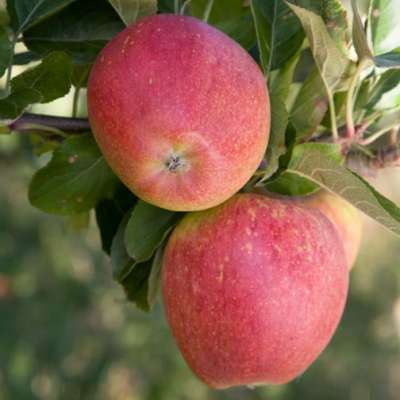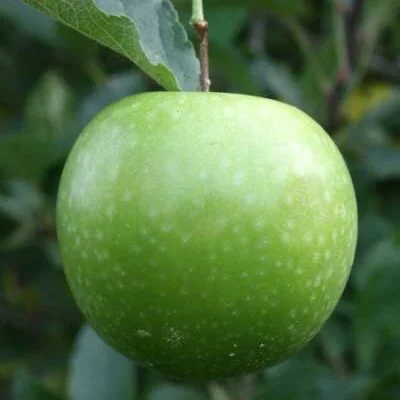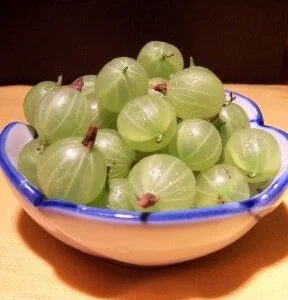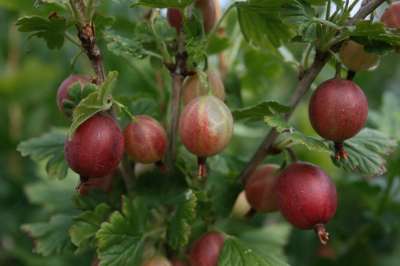Your basket is currently empty!
Apart from Apples, Pears are the most popular of all fruit trees. A well grown pear tree can yield prolifically for 30 years or more and is a valuable asset to any garden or orchard. It is possible to have Pears in season from late August right through to the Spring and there is significant diversity in type and variety, much more so than might be thought observing commercially sold pears which tend to be selected from a very narrow group.
Order our quality Pear Trees.
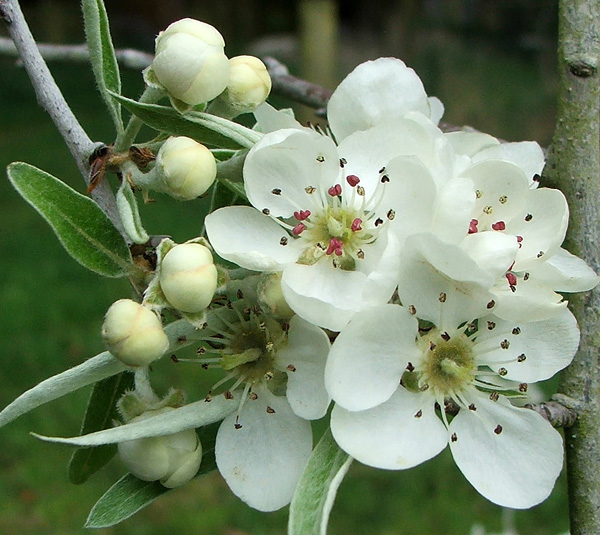 A Pear will appreciate a warmer aspect than an apple and will always give of it’s best with lots of sunshine and some shelter. It should be noted here that Pear trees flower earlier than apples and this is part of the reason why they benefit from a more benevolent position. The flowers often begin to open in early April. But there are especially hardy varieties which are more tolerant too and it is possible to grow good pears in all parts of the country. There are a range if growing systems and shapes, the choice of which will be influenced by the area in which you wish to grow them. A pear tree can fulfil many functions in the garden – not only as a traditional orchard tree, but also in the garden as a small tree in the mixed border, as a edging to a path or driveway, on the patio in containers or as a closely set line or row. The leaves of the pear tree are very pleasant too, shinier than an apple and some varieties have good autumn leaf colour. This added to the profuse display of snowy white blossom makes the pear an appropriate addition to the garden as an ornamental tree.Pear trees are quite vigorous so it is important to select a rootstock appropriate to your needs and to decide on how exactly you wish to grow them to get the best from your investment.
A Pear will appreciate a warmer aspect than an apple and will always give of it’s best with lots of sunshine and some shelter. It should be noted here that Pear trees flower earlier than apples and this is part of the reason why they benefit from a more benevolent position. The flowers often begin to open in early April. But there are especially hardy varieties which are more tolerant too and it is possible to grow good pears in all parts of the country. There are a range if growing systems and shapes, the choice of which will be influenced by the area in which you wish to grow them. A pear tree can fulfil many functions in the garden – not only as a traditional orchard tree, but also in the garden as a small tree in the mixed border, as a edging to a path or driveway, on the patio in containers or as a closely set line or row. The leaves of the pear tree are very pleasant too, shinier than an apple and some varieties have good autumn leaf colour. This added to the profuse display of snowy white blossom makes the pear an appropriate addition to the garden as an ornamental tree.Pear trees are quite vigorous so it is important to select a rootstock appropriate to your needs and to decide on how exactly you wish to grow them to get the best from your investment.
Good Pollination
Is key to obtaining the maximum crop! Some varieties are self fertile so if you can only plant one tree then it is important to make sure that it is self compatible. But the majority of Pears really need the company of another different variety to cross-fertilize. This not only maximizes the weight of crop, correct pollination also influences the quality of the crop too. Did you know that poor pollination is often accountable for mis-shapen or grade 2fruits? Poor pollination can be attributed to a lack of suitable pollinating partners, but cold or wet weather during flowering – which suppresses the natural pollinating activities of airborne insects – can also be the culprit.Pollination will be explained by good fruit tree websites’ so wherever you select your varieties from make sure you are confident that pollinating partners from the appropriate groups are selected. Pollinating groups will be identified either by a letter prefix – A,B,C or D – or a number 1,2,3 or 4. This prefix identifies the order in which the varieties flower because contrary to your perceptions not all Pear trees flower exactly at the same time and there is a ‘season’ albeit a fairly short one. The first varieties to come into blossom will belong to the ‘A’ or ‘1’ group and the last will be in the ‘D’ or ‘4’ group. Once you understand this it is quite easy to pick varieties that ‘go’ together. All you need to know is the group it belongs to and then choose another in the same group. As there is some overlap in timing it is usually safe enough to choose varieties in adjacent groups as well and these will usually have some useful pollen open at the same time so for example a ‘B’ and a ‘C’ group variety pairing can normally be relied upon to fertilize one another.One point to bear in mind is a small group of varieties that are known as triploids. These have no useful pollen of their own so can’t be relied upon to cross pollinate with anything. They will be reliant on other varieties to pollinate themselves but won’t reciprocate with useful pollen of their own. This is why a triploid must be grown with two other non-triploid varieties. Happily there aren’t many varieties that fall into this category.Varieties that are self compatible and will provide a good crop when grown solo and will be described as such. It is important that you take the advice only of an expert in this respect as I keep seeing varieties being sold as self pollinating in less ‘traditional’ outlets such as certain auction websites and other non-specialist sources which are most definitely not self fertile! This practice goes on because it makes it easier to sell a variety to the non initiated if can be described as such. The truth is not many varieties of pear are self fertile, although the majority of cultivars may produce sporadic fruits even if grown on their own, they will never provide reliable or quality crops. The actual list of varieties that are truly self fertile is quite small.
The many ways of growing Pear trees.
There are lots of shapes and sizes in which you can train your Pear trees and this makes them ideal for all situations.Cordon growing Is one of the easiest methods; these ‘straight up’ trees are also very easy to incorporate into smaller spaces as they need a width of just 30” or so in which to grow. You can plant cordons in an open position and support them with a standard rose stake or a stout bamboo cane even if the area is not too windy or exposed. More traditionally perhaps they are grown by a fence or wall and for success this should face south or west for preference. Pruning for cordon pear trees is very easy and only necessary once a year. Crops are quite heavy – 12ibs or more from established trees. Cordon Pear trees are the best way of growing if you ask me, easy, productive and they don’t take too much room. The fruits can actually be larger than those borne on regular trees and they are quite quick to come into bearing, often just 2 seasons.
The small bush tree
Would normally be grown on the Quince C stock and a good choice for average or smaller sized plots, or an allotment. Attractive trees which are relatively easy to grow and maintain and easy to harvest too. An ideal choice for smaller lawn or the larger garden border or a small orchard setting. 2/3 years to reach fruiting maturity is usual.The larger bush tree Would usually be seen as a half standard with a trunk clearance of 4’ or so. This makes it an ideal choice for where it is required to be mown beneath so a paddock or larger lawn/grassy area is the best home for these larger trees which may be on Quince A stock. Crops are heavy but a little longer to come into bearing, 3 years or so is normal.
Fan & espalier trees
These are the preferred choice for a nice sunny wall or fence. You will need an area not less than 180cm’s in height and the same in width for one tree. Not as easy to train and maintain as cordons, but specialist sources for fruit trees can usually give instruction and few garden tasks are more satisfying than growing your own fan or espalier tree. It takes 3 seasons to work up a good trained tree and the season after that they will begin cropping. Fruits are of qood quality and exemplary flavour. A south or west facing position is to be preferred for fan or espalier trees. These are ‘flat’ trees that hug the fence or wall they are on. An espalier is typified by one main straight trunk with two or three orderly sets of side branches giving quite a formal appearance. A fan has a more rounded outline like a geisha fan. Both are of similar productive capacity and popular opinion is divided as to which is nicest, Forced to choose I think a fan tree is marginally easier to train well. Both these training types can be on Quince C or Quince A.
As an edging to a border Here we are looking at the stepover tree. These quanity, very short trees, aren’t for everyone – they have a top height of just 15-18” – but they can perform a useful function where a fruitful edging or divider is required. The trees only have one main stem and two laterals forming a top bar that has the shape of a capital ‘T’ Crops on such small trees are understandably limited but the fruits are large and juicy. Stepover pear trees should be spaced just 150cm’s apart and will need a top wire to tie the branches down to, at least for the first 3 or 4 years. After that the top wire can often be dispensed with. All varieties are suitable to be grown in this way and a line of stepover pears is a most attractive garden feature. Stepover pear trees are grown on Quince C stock.
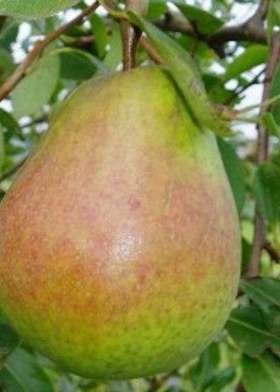
Columnar style Pears
Are similar really to the cordon trees described above but a little more slender in outline and you can plant them even closer apart. Crops appear all up the stems and with the benefit of receiving so much extra sunshine the flavour develops to fantastic levels. Really easy to grow and prune – just go over the side shoots once a year in late Summer and shorten them. The height can be controlled to 6-8’ or so according to your wishes and is quite flexible. Yields are only slightly less than the cordon style tree. The rootstock used for these trees is normally Quince C.
You can buy column Pear & fruit trees here.
The dwarf pyramid Is quite an old style of pruning. The branches of the tree are wider at the base than the top, hence the name. This allows for more sunshine to reach the fruits and has been championed by experts for many years. Unfortunately you really need to be an expert to train a dwarf pyramid well as it isn’t easy to end up with a well balanced tree. I would stick to a normal bush tree unless you know what you are doing.



